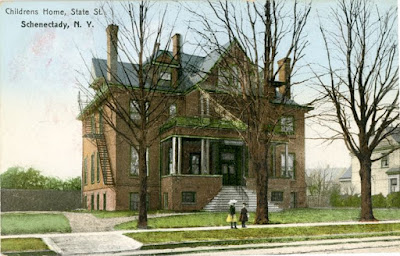Ghouls Among Us
By Robert A. Waters
Nineteen-year-old Cynthia Clements vanished on Labor Day, September 1, 1980.
The Tampa Bay Times reported that “Miss Clements was last seen inside the Li’l General Store at 6185 54th Avenue North in Kenneth City [Florida], where she had just taken a job as a night clerk. A St. Petersburg Times delivery man dropped off a load of newspapers and spoke with her briefly. The delivery man said later that nothing appeared unusual.”
At about 5:30 A.M., customers flagged down a Pinellas County Sheriff’s deputy and informed him the clerk was missing. Investigators found Cynthia’s purse still in the store, an unfinished crossword puzzle on the counter, the radio playing, and the cash drawer unopened. There appeared to be no signs of a struggle—the cashier had just…disappeared. Cynthia had no car, so she had likely been taken away by someone in a vehicle. A detective told reporters that “there is no shred of evidence to indicate that Miss Clements left the store voluntarily.”
Pinellas County spokesperson Merrill Stebbins said that Cynthia “has no criminal record. There is no suggestion she had done this kind of thing before. There’s just nothing to indicate she was anything but a personable, quiet, religious person.” Cynthia, who studied her Bible often, had written her former pastor back home to tell him she was searching for a “good” church.
Just a month earlier, the family had moved to the St. Petersburg area from Birmingham, Alabama. Her father, John, told investigators he’d worried when she told him she was taking the convenience store job, but she assured him the neighborhood was safe. “Cynthia was never involved in any drugs, any alcohol, any misfits,” said her mother, Nancy. “That’s why we know something bad happened to her, because we know her.”
Six weeks after she disappeared, on October 14, a hiker found Cynthia’s decomposed body in the woods off Bryan Dairy Road near Largo. She had been strangled. Although no semen was found on or inside her (due to the decomposed state of the corpse), cops believed she had been raped. At the time, there were no surveillance cameras in the store. Due to a lack of physical evidence or an eyewitness, the case quickly went cold.
Numerous other girls and young women had gone missing from the same area, so this case garnered a lot of local publicity. At the time, none of the cases had been solved. The Tampa Times received a letter that spoke for many. “There are…ghouls among us,” said the writer, “who wait for the cover of darkness to carry out their ghastly deeds.” He suggested that convenience stores hire two clerks for the night shift.
On October 21, Cynthia’s parents laid her to rest in Memorial Park Cemetery. The Tampa Bay Times reported that “while Pinellas County sheriff’s detectives stood behind trees watching for her killer, a young Baptist preacher prayed for the quiet 19-year-old woman and stunned survivors she left behind.” No suspicious individuals showed up for the funeral, and cops went home with no leads.
As the search for Cynthia’s killer went on, Li’l General stores offered a $2,500 reward.
Since many young women had gone missing or were murdered in various locales around St. Petersburg and Tampa during that time, investigators thought it likely that a serial killer might be responsible for some of those crimes, including that of Cynthia Clements. For instance, a career criminal named James Delano Winkles abducted and murdered at least two young women, one in 1980, the other in 1981. He kidnapped real estate agent Margo Delimon, held her for several days while he brutally raped her multiple times, and then killed her. He also snatched and murdered a dog groomer named Elizabeth Graham. Detectives questioned Winkles about Cynthia’s murder but could never find the evidence needed to confirm his involvement. The killer died while on Florida’s death row.
Fast-forward forty-three years: her killer still has not been identified and justice seems a long way off.
NOTE: Here is a list of several girls and women who disappeared or were murdered in the Tampa/St. Petersburg area in the early 1980s. None of these cases have been solved.
Leandra Hogan, 16. A runaway, Leandra's body was located off Hillsborough Avenue in Hillsborough County near Tampa. She died as a result of upper body trauma.
Barbara Barkley, 22. (Pictured). Disappeared from Pipe Furniture Store in Pinellas County. Although her car was later located in nearby Clearwater, her remains have never been found.
Melinda Harder, 20. Disappeared while walking to her boyfriend’s home in St. Petersburg. Remains were found 9 years later in Maximo Park.
Carla Hanavin, 14. A runaway, her body was located in Tampa. As far as I can tell, this case was never solved.
ANOTHER NOTE: From 1976 to 1983, at least 35 young women and teenaged girls were murdered inside the city of Tampa. At the time, none of the crimes had been solved. In several of the cases, investigators suspected one or more serial killers were working the area.







